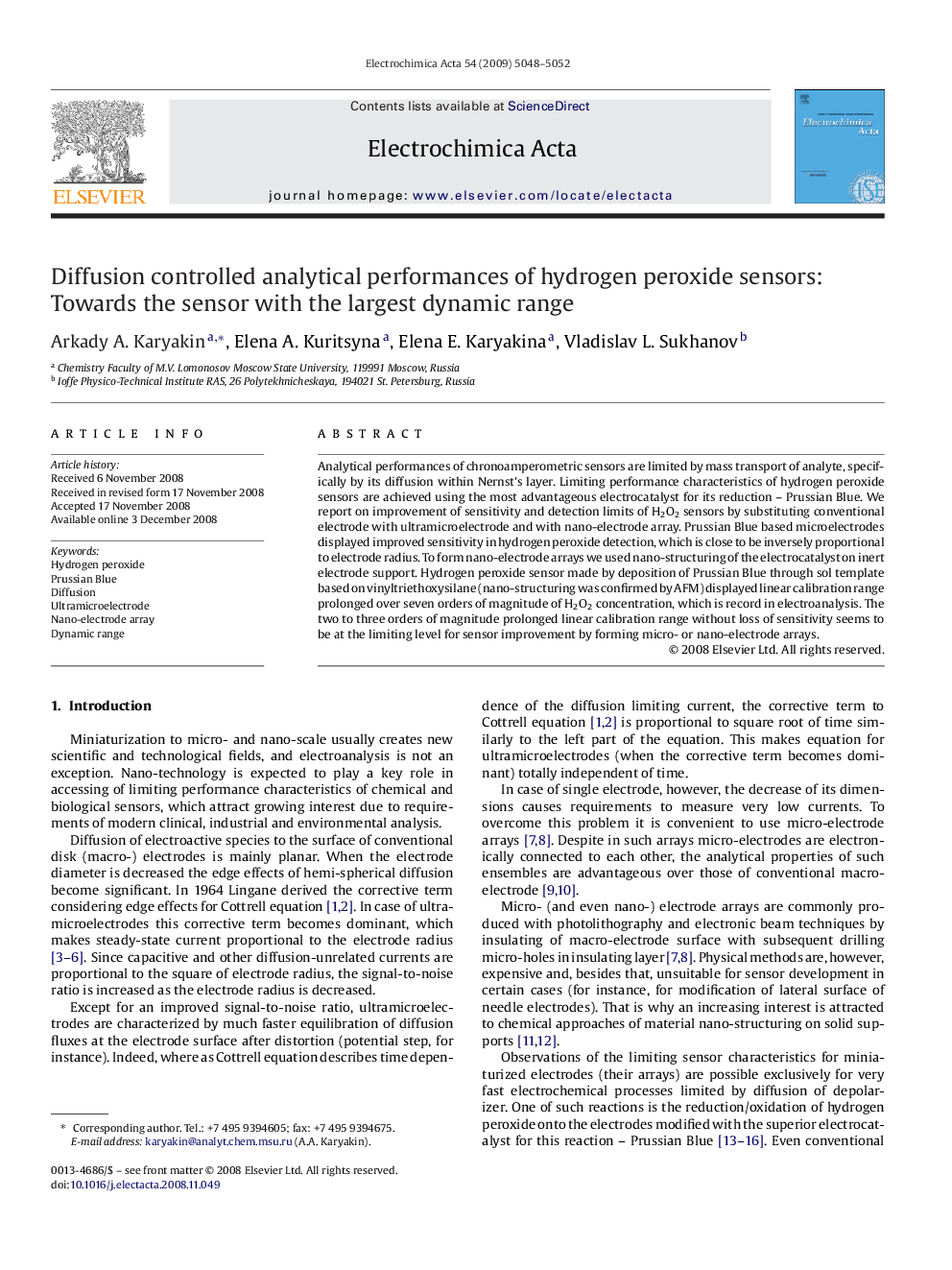| Article ID | Journal | Published Year | Pages | File Type |
|---|---|---|---|---|
| 193383 | Electrochimica Acta | 2009 | 5 Pages |
Analytical performances of chronoamperometric sensors are limited by mass transport of analyte, specifically by its diffusion within Nernst's layer. Limiting performance characteristics of hydrogen peroxide sensors are achieved using the most advantageous electrocatalyst for its reduction – Prussian Blue. We report on improvement of sensitivity and detection limits of H2O2 sensors by substituting conventional electrode with ultramicroelectrode and with nano-electrode array. Prussian Blue based microelectrodes displayed improved sensitivity in hydrogen peroxide detection, which is close to be inversely proportional to electrode radius. To form nano-electrode arrays we used nano-structuring of the electrocatalyst on inert electrode support. Hydrogen peroxide sensor made by deposition of Prussian Blue through sol template based on vinyltriethoxysilane (nano-structuring was confirmed by AFM) displayed linear calibration range prolonged over seven orders of magnitude of H2O2 concentration, which is record in electroanalysis. The two to three orders of magnitude prolonged linear calibration range without loss of sensitivity seems to be at the limiting level for sensor improvement by forming micro- or nano-electrode arrays.
